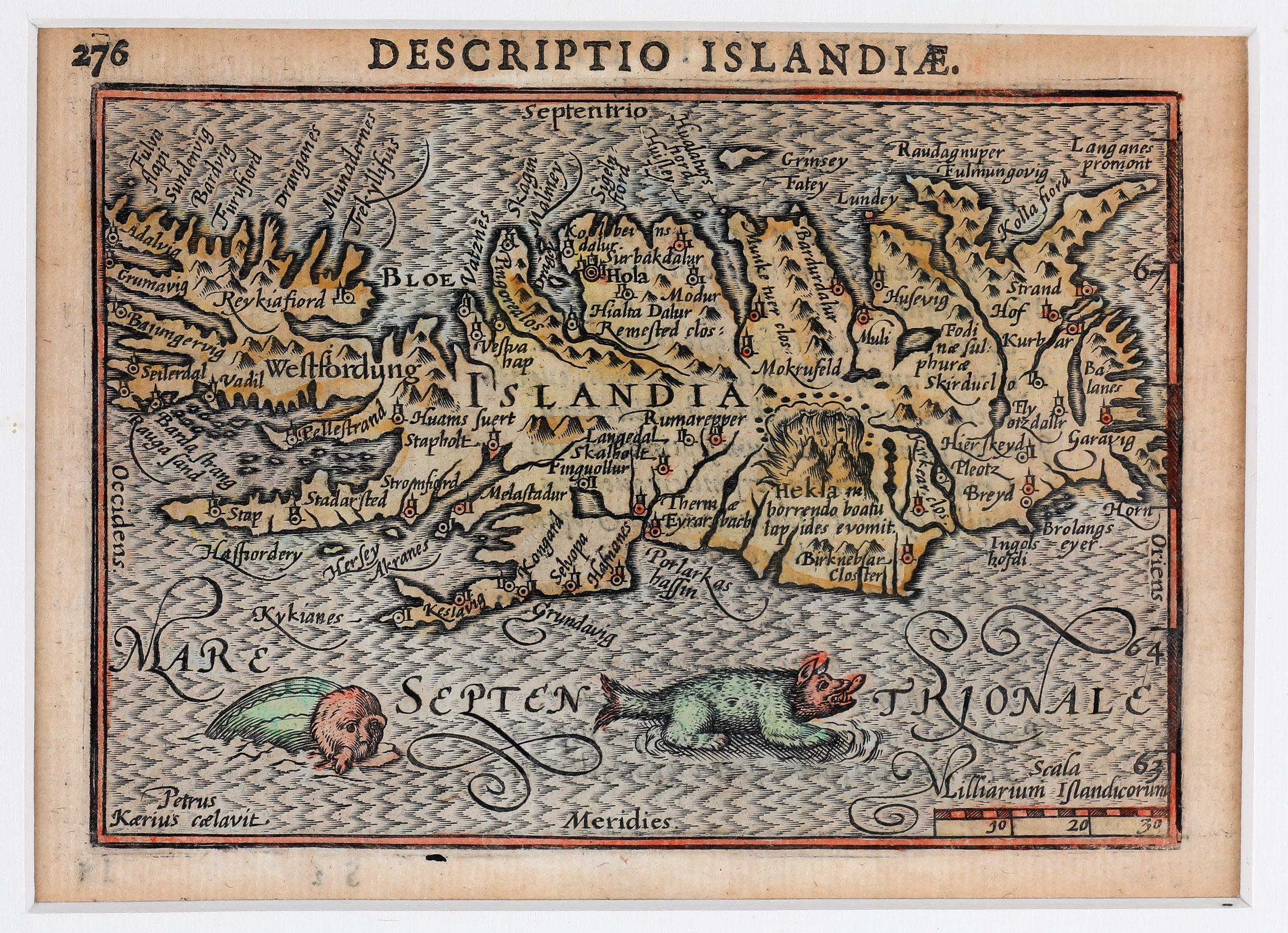Pieter van den Keere (1571 – 1646) & Barent Langenes & Cornelis Claesz (1551 – 1609)
Petrus Kaerius, the latinized version of his Dutch name Pieter van den Keere, was an engraver, publisher and globe maker. Born in Ghent, he emigrated in 1583/84 with his family for religious reasons to London. Three years later his sister Colette married Jodocus Hondius and from him, Pieter received training as an engraver. In 1593 both settled in Amsterdam where Pieter worked for different cartographers.
Barent Langenes was a Flemish bookseller and publisher, about whom little is known, not even his life dates. He worked in Middelburg, Holland.
Cornelis Claesz was a Flemish publisher. Born in Leuven, he opened a bookshop in Amtrak which was in easy reach of merchants and sailors and published nautical and celestial charts which helped the skippers start their voyages with the information they needed.
Langenes published the Atlas „The Caert-Thresoor“ which set a new standard for minor atlases in 1598. The maps were engraved by brothers-in-law Jodocus Hondius and Pieter van den Keere. The title page notes that the atlas was on sale in the shop of Cornelis Claesz in Amsterdam. The atlas has five maps of Scandinavia, one is of Iceland. In 1600 a new edition of the atlas in Latin was published under the name „P. Bertius Tabularum geographicarum contractarum libri quatuor“. The next 12 years six new editions appeared with unchanged maps but text in Latin, French, Dutch and German.
Map details
This rare miniature map of 1598 is based on Abraham Ortelius‘ classical map of 1590. It carries the heading „Descriptio Islandiae“ and in the center of the map „Islandia“ is to be found. There is a distance scale in the bottom right corner. The sea is hatched and two monsters are swimming in the ocean. The map has nearly 80 place-names, many of them with church symbols, including the bishoprics Skalholt and Holar; the latter is hightlighted. Hekla is seen erupting, accompanied by the text „Hekla in horrendo boatu lapides evomit“ (Hekla vomits stones with terrible noise). No glaciers are depicted or named. In the bottom left corner is an inscription that says „Petrus Kaerius caelavit“ (which means „has engraved“).
The map is very similar to the map of 1649 which is attributed to Pieter van den Keere & Claes Janszoon Visscher. That map has no headline but the lettering „a.6“ is added the bottom.



